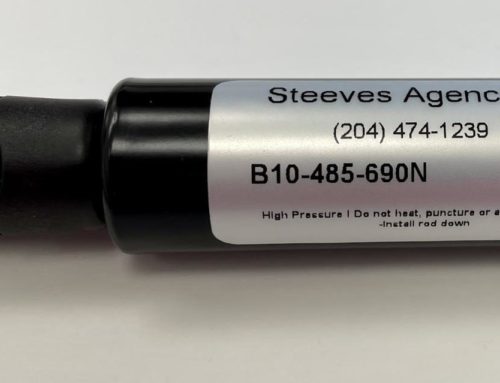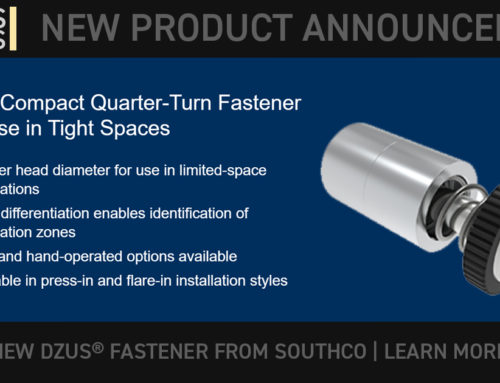What is a Quarter-turn fastener?
Quarter-turn fasteners are a unique type of quick access fastener that consist of a Stud, Retainer and Receptacle. With these three simple components, you can provide quick, reliable access to any access panel, door, lid or enclosure. Quarter-turn fasteners are named this way because they engage or disengage with only a 90 degree (quarter of a turn) motion.
Are there different kinds of quarter-turn fasteners?
Technically, any latching mechanism that requires only a 90 degree turn can be called a “Quarter-turn”, but historically, we use this term for the varieties that use a stud, retainer and receptacle, like Southco’s “Dzus” (pronounced like “Zeus”) 82, 85 and D1-D9 series hardware. Some are designed for automotive uses (the D1-D9), because of their amazing strength characteristics, while others are more suited to non-automotive access panels because of cost and ease of installation.
What problems do quarter-turn fasteners solve?
Quarter-turn fasteners solve a few problems! They provide compression, are highly resistant to vibration, and remain captive in the door panel. Although a screw or a bolt might also provide compression in a compact form factor, screws require many turns/rotations to to the job, and are susceptible to loosening due to vibration. We all know how easy it is to drop or lose screws! Quarter-turn fasteners do all that work in a simple 90 degree twist, and they never fall out of the door panel!
What applications are they best suited for?
Quarter-turn fasteners are ideal for access panels that require weekly/monthly access, and that need a snug, secure fit every time. Quarter-turn fasteners are widely used in trains, buses, HVAC equipment and other (sometimes invisible) applications where technicians might need periodic access to electronics, controls, lighting or HVAC equipment. There are hundreds of applications where Quarter-turn fasteners can be used.
What are the limits of quarter-turn fasteners?
Quarter-turn fasteners do have certain limitations. They are, for example, very sensitive to “grip range”, or the total thickness of materials to be fastened. If the material is too thin for a specific stud length, the door won’t be securely closed. If the material is too thick, the quarter-turn won’t latch properly, or could be too tight, and potentially damage the door. For this reason, Quarter-turn fasteners work very well in door materials like steel, stainless or aluminum, but not so well in roto-molded plastics or fiberglass unless strict material thickness tolerances are met.
How do I pick the right Quarter-turn fastener?
As mentioned earlier, quarter-turn assemblies are sensitive to grip range, and there are several details to consider when picking the correct receptacle, stud and retainer. We have been extensively trained to help our customers find the correct combination of components, but there are now online tools that make that job much easier. If you’re planning to use quarter-turn fasteners, we highly recommend reaching out to one of our experts to help you. We’re happy to help you!
What is the coolest thing you’ve seen done with quarter-turn fasteners?
One of the coolest applications I’ve seen for Quarter-turn fasteners is on my Honda Ruckus scooter! There’s a small under-seat storage compartment that was held closed with a screw and captive nut. I changed them out for a wing-head quarter-turn fastener with a nylon retainer and a clip-on receptacle. It made that compartment usable and easy to access (if you know it’s there!).
What materials are they available in and what are good for?
Quarter-turn fasteners come in a variety of materials, including steel (with various optional finishes), stainless steel, and even plastic! There are also a range of head styles available, for applications that require tool access, or special keys.






